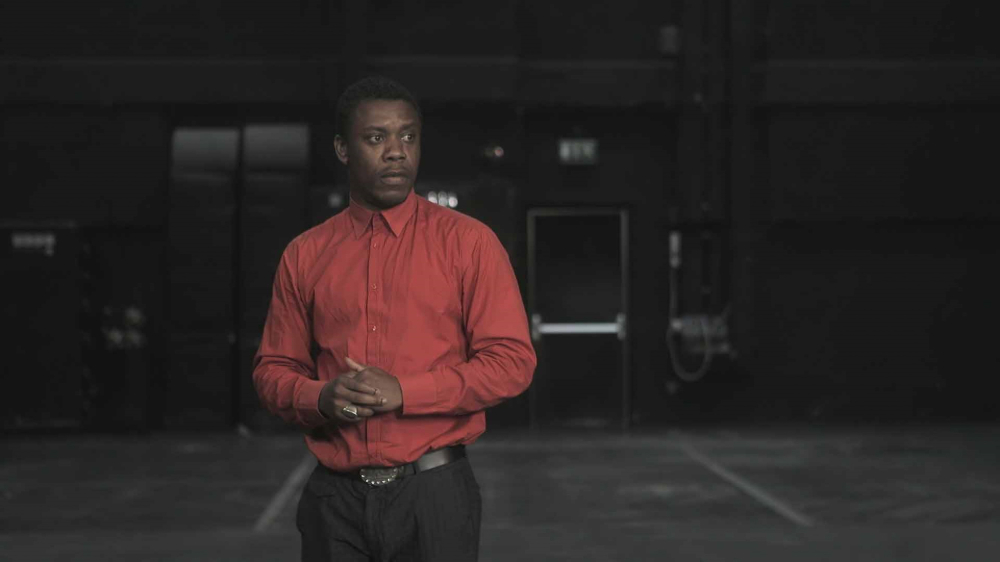PETER FRiEDL
In his film installation Report (2016), Peter Friedl explores the permeability of language and identity boundaries. The source text is “A Report to an Academy,” Franz Kafka’s 1917 short story about the ape Red Peter’s becoming human—a parable about assimilation, which has been nearly buried under the burden of interpretation and constant homage. The only setting in Friedl’s complex film project, seemingly conform with classical dramatic theory, is the completely emptied stage of the National Theater in Athens, designed by German architect Ernst Ziller in the late nineteenth century. A total of two dozen actors of various origins and backgrounds appear one by one: women, men, children, almost always alone, but occasionally in pairs. A few of them make recurring appearances through the course of the film. In front of a camera sharply focused on them, they all recite by heart extracts from Kafka’s monologue-esque text in their mother tongue or a language of their choice: Arabic, English, Farsi, French, Greek, Swahili, Kurdish, Russian. German, the original language of the canonical Kafka piece, is deliberately absent. Friedl’s film, doing away with subtitles, comes to life through the presence and charisma of the actors and through the precise and thoughtful editing. With some omissions and variations, the work remains faithful to the original narrative throughout the fragmented polyphony of languages and gestures. It features predominantly non-actors, mostly protagonists of the current global refugee and migration movements, but the Greek actress Maria Kallimani is also part of the cast. The long process of casting took place in Athens.
Peter Friedl’s Rehousing project (2012–19) is the result of the artist’s interest in finding artistic solutions to problems of modernism that have never been fully resolved in the course of the movement’s history. It consists of minutely detailed, scale models of housing projects which are case studies for a mental geography of different forms and modes of modernity. Among the six models exhibited can be found one of the few derelict buildings left from Vann Molyvann’s “100 Houses” project completed in 1967 for workers of the National Bank of Cambodia in Tuk Thia, Phnom Penh (101); a dingzihu or Chinese “nail house,” an architectural landmark in times of rampant redevelopment and social change (Holdout); a dome from Drop City, the short lived counterculture community founded in Southern Colorado in 1965, which transformed Buckminster Fuller’s geodesic design principles into a DIY version (Dome); a recently installed container home from a refugee camp in Jordan, a case study of contemporary political architecture (Azraq); Winnie and Nelson Mandela’s former home in Soweto, now transformed into a museum (8115 Vilakazi Street); and a model of one of the prefabricated container houses that made up Amona – the Israeli outpost in the Palestinian territories on the West Bank which was cleared in 2017 (Amona).
Artisti
| Dettagli | Name | Portrait |
|---|---|---|
| Peter Friedl |
Instituzioni
| Titolo | Paese | Località | Dettagli |
|---|---|---|---|
| Nicolas Krupp | Svizzera
|
Basel
|
Svizzera
Basel
|



